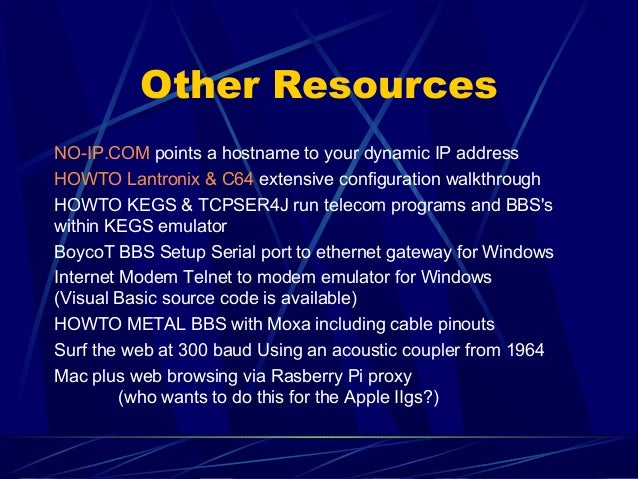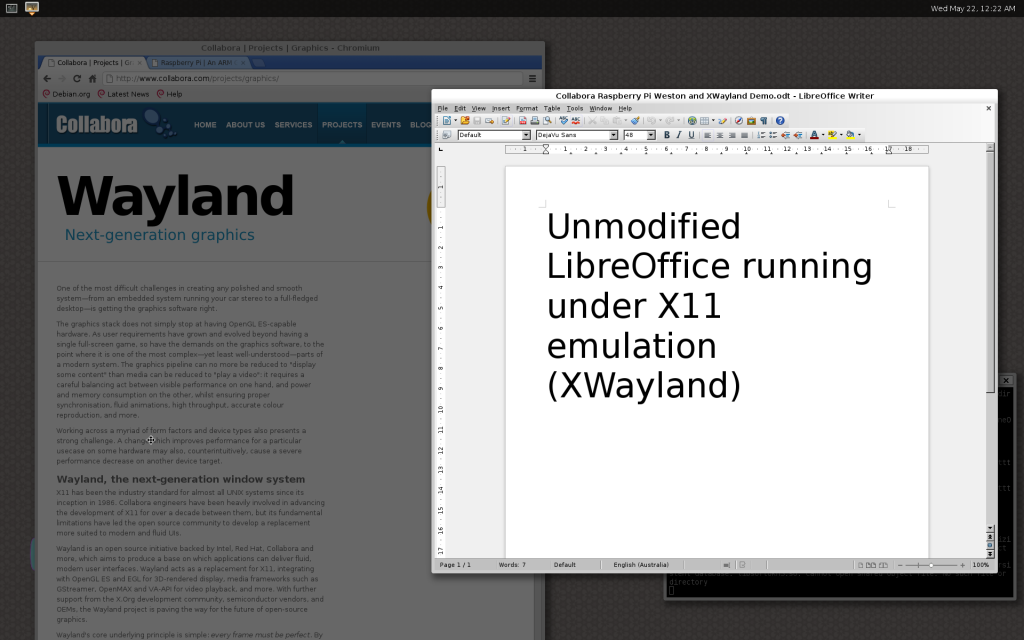Hi there, I am making a project, where I am trying to use processing and my Arduino together. I am fairly new in both of the programs. I haven't had problems with the Arduino program saying that my serial port was busy, until I started using Processing. Solved: I purchased a USB to serial adapter for my mac. The /dev for the device is tty.usbserial-A602LJDZ. $ screen /dev/tty.
| Click here to return to the 'Use 'screen' as a serial terminal emulator' hint |
Can you not just save all that as terminal profile and then double click it, or select it from the Terminal dock menu? No applescript involved.
---
~/.sig: not found
Hello
I am not a programmer. What shall I do when I've setted the port of QuickTerm, and came back to the window 'RS-232 Terminal'.
I clicked on 'Connect'. It probably connected but the window is empty, I cannot type anything in it, and anyway I don't know what to type.
I want to use it for our French 'minitel'. I think it is V33, but not sure.
I use a laptop and MacOs 10.4.9.
My modem is inside :
Modele : MicroDash
Type d'interface : USB
Modulation : V.92
Nom de serie : Euro
Version Matériel : 1.0F
Version du programme interne : APPLE VERSION 2.6.6
Gestionnaire : InternalUSBModem.kext (v2.6.6)
Pays : 3D (France)
Is X11 necessary ? I am not keen on the terminal, so could you give basic explanations.
Thank you.
I use this with an unbranded PL-2303-equipped adapter bought from eBay for six of our English pounds, compared to thirty-odd for a Keyspan device, and it talks perfectly to my Cisco routers. I haven't tried talking to PDAs or GPS devices though.
'Shell' out. See what I did there? Heh - oh dear.
Download the source at the following address:
ftp://kermit.columbia.edu/kermit/archives/cku211.zip
Copy it in a folder, then, using terminal:
% cd <the folder you copied it in>
% unzip -a cku211.zip
% make macosx103
% sudo make install
it will compile and install Kermit in the folder /usr/local/bin/kermit; the binary is called wermit.
It's ready! to launch it:
% /usr/local/bin/kermit/wermit
and here it is:
C-Kermit 8.0.211, 10 Apr 2004, for Mac OS X 10.3
Copyright (C) 1985, 2004,
Trustees of Columbia University in the City of New York.
Type ? or HELP for help.
(/Users/wallybear/) C-Kermit>
Compiling from source give also the chance to tweak compiler settings so to make a PPC, Intel or Universal binary application.
Best Terminal Emulator Mac
Wow! Kermit - I haven't used that for at least a decade, but I seem to remember that it was very good... must give it a try...

Anyway, that aside, for those who like minicom, Jeffrey Frey has done a Mac port which can be found at the bottome of his page here:
http://turin.nss.udel.edu/programming/
also the awesome thing about kermit which i've been using recently for a few years is that it lets you send files via xmodem (useful when ur cisco gear pukes on itself), and also kermit is scriptable (useful when you have 50+ apc power strips you have to configure the same way, enter non-interactive script).
I'm not saying I'd recommend it, but you could also use tip, 'man tip' for more info.
osx unfortunately doesn't come with tip .. i was disappointed quite a bit when I found out
one's at http://turin.nss.udel.edu/programming/
This is an excellent solution (I've been a regular, frustrated, user of ZTERM). I am, however, unable to configure the serial port settings (I routinely connect to a serial device running 38400/n/8/1) I've tried every combination I can imagine with stty to set the port before starting screen and it is still always stuck at 9600 baud.
Update: I found on Apple's discussions board the following, which works:
screen -U /dev/tty.KeySerial1 38400
Adjust the script accordingly and it works perfectly!
set baudList to {1200, 2400, 4800, 4800, 9600, 19200, 38400, 57600, 115200, 230400}
set baudRate to (choose from list baudList default items {38400})
tell application 'Terminal'
set serialDevices to (do shell script 'ls /dev/cu*')
set theDeviceList to (paragraphs of serialDevices) as list
set theDevice to (choose from list theDeviceList)
do script 'screen ' & theDevice & ' ' & baudRate
display dialog 'To quit you terminal session type then '
end tell

the second to last line should have been:
display dialog 'To quit you terminal session type <ctrl-a> then <ctrl->'
thanks for all your help, especially bboy for the cheaper cable, and wcontello for the AppleScript.
I am currently taking 2 classes that use HyperTerminal, a Cisco test prep class and a basic Telecommunications classes. I've wanted to use my MacBook Pro to use something HyperTerminal related. I have a beta of Windows 7 in Boot Camp and VMWare, and MS got rid of HyperTerminal in Vista. And of course no Mac (except for Xserves) have a serial port.
---
Startup Shortcuts - Shortcuts for debugging your Mac on startup, on your iPhone
http://web.me.com/maxeverde/Startup
You wrote: 'type Control-A followed by Control- to exit your screen session. If you fail to do this and exit a Terminal session, you'll leave the screen session alive and the serial resource unavailable until you kill the screen session manually.'
OK, I boo-booed. Now how can I kill the screen session manually?
(I wish I knew Unix better.)
--Gil
Mac Terminal Serial Emulator Screen Resource Busy Software
Look for a process called 'SCREEN' using ps. Here's the output of my Terminal: Kill the process associated with SCREEN (i.e. 'kill -TERM 327'), and the SCREEN will go away.
You can also reattach to a detached screen by running 'screen -rD'.
If you want to use screen as an terminal, but don't want it to go into the background when the window dies, you will need to turn off auto-detach.
To do this, edit ~/.screenrc (it probably won't exist) and add the following line:
autodetach off
The next time you start screen, if you kill the window you will kill the session.
How about simply 'cu -l /dev/whatever -s 19200' and that's all it takes.
Thanks! Working great w/an IOGEAR GU232A USB to Serial adapter which uses the PL2303 chip set.
This is a fantastic thread. Saved me from using Zterm. One problem though. I'd like to be able to scroll up past the top to show more than one page of data. Anyone figure out a way to do that?
since people are still posting to this 4 year old thread, I think it's useful to point out that iTerm - http://iterm.sourceforge.net/ - is a cocoa terminal editor that is up to date and under continued development (and that's not to mention the Terminal application packaged with os X).
I found Furrysoft's goSerial rather nice for my AVR hacking projects:
http://www.furrysoft.de/?page=goserial
Connect to serial/console terminal with MacOS using screen
It’s possible to connect to serial console with MacOS without using a specific app but only screen.
Mac Terminal Serial Emulator Screen Resource Busy Mode
First, you need to find the correct device you will use to connect to the serial console. Depending on your installation and your adapter, you’ll can find it under different names with one these commands:
Here, we can see that our device is available on /dev/tty.usbserial
If you have any doubt with the screen command, you can check the documentation, with the specific part regarding the console connection:
For example, if you want to connect to serial port with those parameters:
- 9600 bps
- 8 data bits
- flow control
Mac Terminal Serial Emulator Screen Resource Busy Number
You can just use this command:
Hint: Note that if you’re using a specific adapter (like an adapter DB9/RS232 to USB), you will probably need to install the driver first to get the device available.
Serial Port Terminal Emulator
Comments are closed.